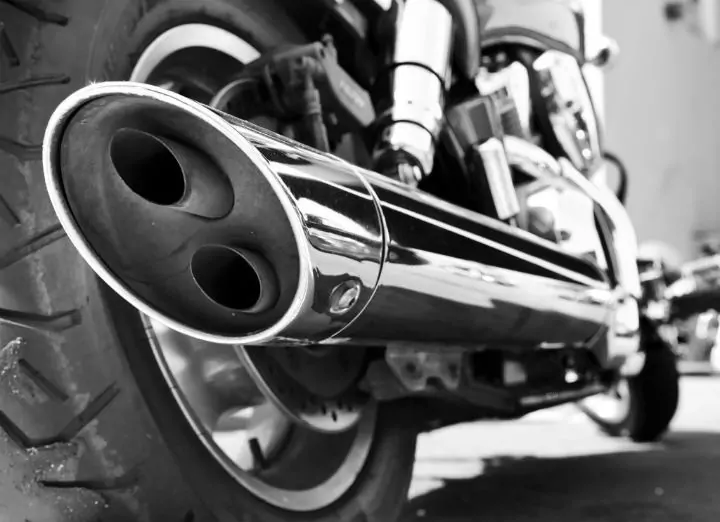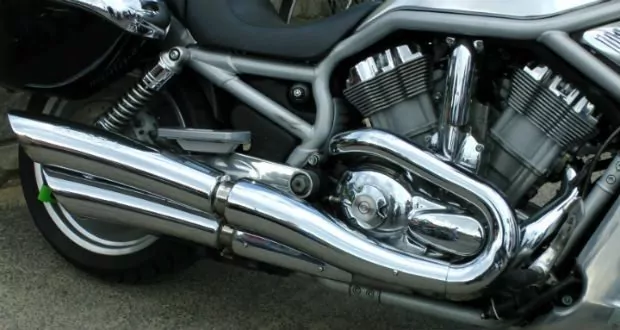In December 2003, the US Environmental Protection Agency (EPA) introduced new rules for motorcyclists to follow. These regulations established more stringent emission requirements for highway motorcycles. In this article, we’ll talk about what increasingly stringent EPA emissions requirements will mean for motorcycling in the coming years.
EPA’s New Emission Standards for Highway Motorcycles
Before we start discussing the effects of EPA’s emission requirements to motorcycling in the future, let’s have a quick review of EPA’s latest emission standards.
The regulation for highway motorcycles are under the Clean Air Act section 202. This section requires EPA to address the necessity to achieve emission reductions from motorcycles and other vehicles.
The Clean Air Act also calls for EPA to introduce new off-road motorcycle emission standards. EPA hasn’t revised the on-road motorcycle emission standards for more than 20 years. Although there have been many vehicle emission control tools over the past 2 decades, motorcycles these days produce more harmful emissions than cars or SUVs.
The latest motorcycle hydrocarbon emission standard is about 90 times the latest hydrocarbon standard for passenger cars. Many of the motorcycles these days meet the current emission standards. However, the current hydrocarbon standard is only about 20 times the present passenger car limits.
Additionally, EPA’s new standards help reduce motorcycle rider’s overexposure to air toxics. Ultimately, it will help achieve certain air quality goals.
Will The New EPA Emission Standards Affect Motorcycles Today?
EPA’s new regulation will only have an impact on new motorcycles produced for 2006 and later years. This means that all motorcycles manufactured before 2006 model years will not be affected. Simply put, they will remain legal and will be allowed to operate.
Generally, EPA provides years of lead time between the publication of a new final rule and its effective date. This is a good thing for motorcycle riders.
What Increasingly Stringent EPA Emissions Requirements Will Mean for Motorcycling in The Coming Years
Because there have been changes in EPA’s standards, there will most likely be changes in motorcycling in the coming years. Let’s discuss these factors of changes.
Cost
If you’re a motorcycle manufacturer, the first question that would probably pop in your mind as you’re informed of EPA’s new requirements is, “How much will be the cost for new emission controls?”
The cost for your motorcycle’s emission control will depend on many factors, including the kind of control technologies used and other factors.
The estimated increased costs for new control emissions is about $30 per motorcycle. This is for 2006-2009 model year standards. For the 2010 model year standards, the average cost for the latest control emissions was $45. For later model year standards, the cost is expected to be much higher.
In the aspect of motorcycling costs, we can simply say that the more stringent EPA becomes in setting emission requirements, the higher the costs of motorcycling will be. Because they require certain standards to be followed, motorcycle manufacturers and riders are forced to install more and more motorcycle emission control technologies, therefore increasing their motorcycling costs.

Performance
When advanced motorcycle emission controls were suggested for cars, several issues arose regarding their effects on motorcycles’ performance.
Cars these days have the lowest emission levels in history. However, performance remains at high levels. The average vehicle today has 93% more horsepower and 29% faster speed. These improvements have taken place along with the trend of heavier sports vehicles.
Similarly, motorcycle manufacturers keep saying that performance of future motorcycles will be equal to or better than today’s current motorcycles. In recent years, advancements in engine technologies allowed the use of new emission control technology tools without affecting the performance of motorcycles.
Motorcycles meeting the new EPA standards in the future should also perform equally well or better than current models. Using some emission control technologies like fuel injection may help improve a motorcycles fuel consumption, reliability, and other aspects of performance.
As one may have observed, we can now see these advancements today. Therefore, we can expect more technological advancements in the coming years.
Safety
Safety is another factor that has become an issue along with the introduction of EPA’s new requirements. The use of catalytic converters has been the concern for many people as they are said to pose some sort of safety hazards to riders.
Because riders are in close proximity to the engine and the exhaust system of their motorcycle, they are very much at risk of severe burns because of their exposure to heat. This is the case whether a motorcycle has a catalytic converter or not.
Considering this safety issue, manufacturers have always tried their best to find ways to protect riders from the harmful effects of exhaust and engine heat. In recent years, they also had to consider the development of catalytic converters as well.
Catalytic converters are exhaust control devices that convert toxic gases and pollutants in motorcycle exhaust gas to less toxic pollutants. They do this by catalyzing or accelerating a redox reaction. The use of this tool is encouraged by EPA in accordance to its motorcycle emission requirements.
For sure, manufacturers do not want to market an ineffective and unsafe product. That’s why it’s only safe to say that if they knew that catalytic converters would pose some safety hazards to their customer, we can expect them to object strongly to the use of these technologies.
Based on statistics, there are more than 200,000 motorcycles with catalytic converters on the road today. Although there are some reported complaints regarding the safety hazards of exhaust system components, these issues do not comprise the total number of motorcycles today.
In the end, we can expect motorcycle manufacturers to introduce more motorcycle safety tools for motorcycle riders to use in accordance with EPA’s emission requirements for motorcycles.
 We’re looking to share the stories of men and women riding motorcycles all over the world. We want to hear and see where you’re riding, and answer all of your questions. Let’s make a big world a whole lot smaller, one ride at a time.
We’re looking to share the stories of men and women riding motorcycles all over the world. We want to hear and see where you’re riding, and answer all of your questions. Let’s make a big world a whole lot smaller, one ride at a time.
Click here to send us your story or ask us your question.
 YouMotorcycle Motorcycle Blog – Motorcycle Lifestyle Blog, MotoVlog, Motorcycle Reviews, News, & How-Tos
YouMotorcycle Motorcycle Blog – Motorcycle Lifestyle Blog, MotoVlog, Motorcycle Reviews, News, & How-Tos

Does this mean that those of with bikes that are newer than 2006 (but by no means “new”), will have to retrofit something in to pass state inspections?
That is a good question Will. I don’t know those specifics but my guess is that you probably won’t be able to get away with retrofit.
This is a good read, thanks for covering the new EPA emission standards. This is something important that all riders should know.